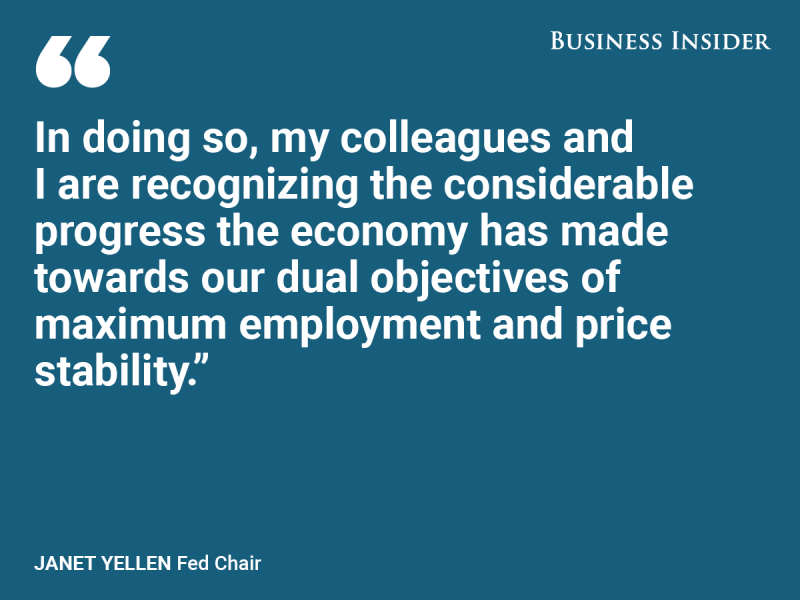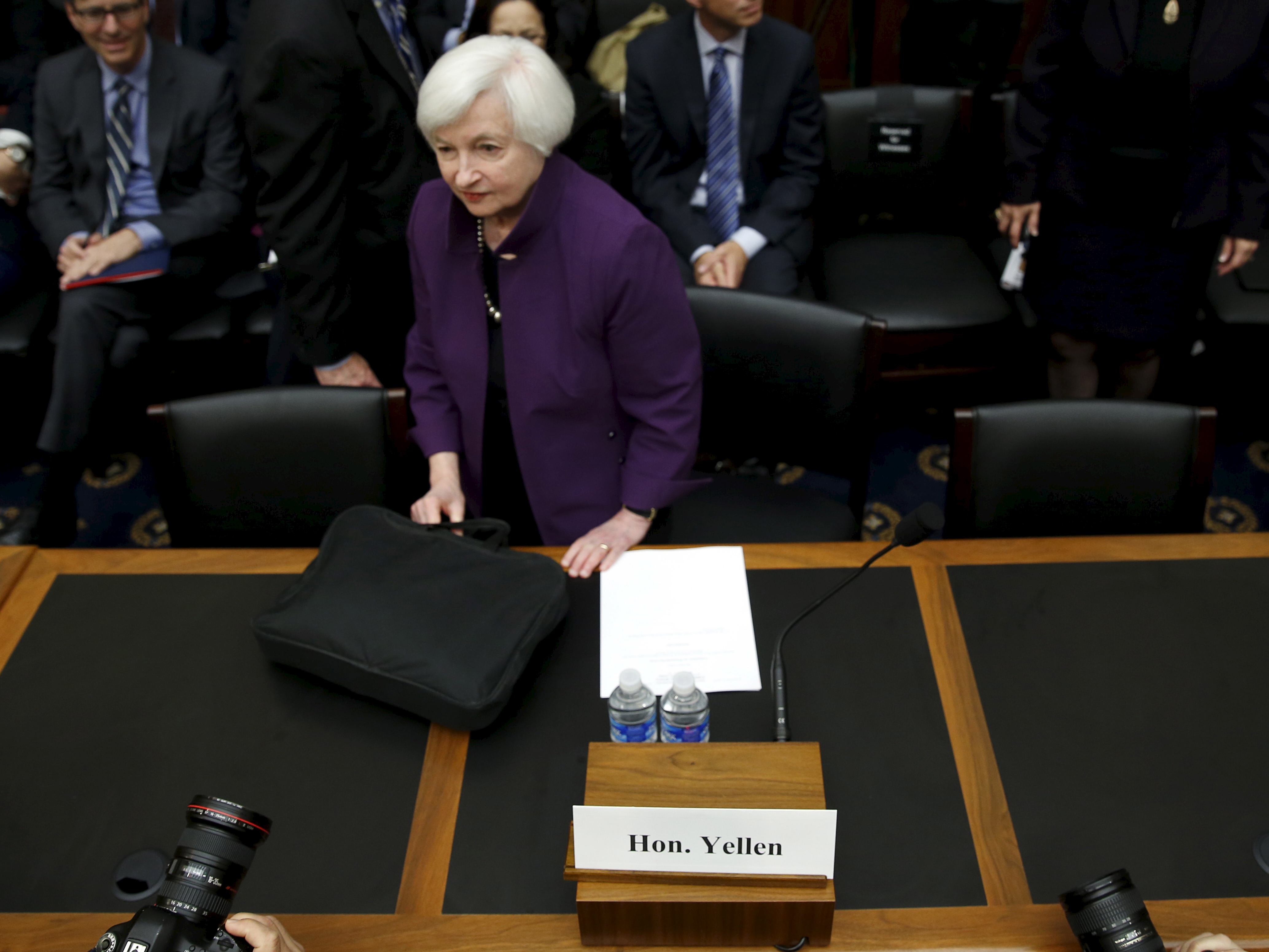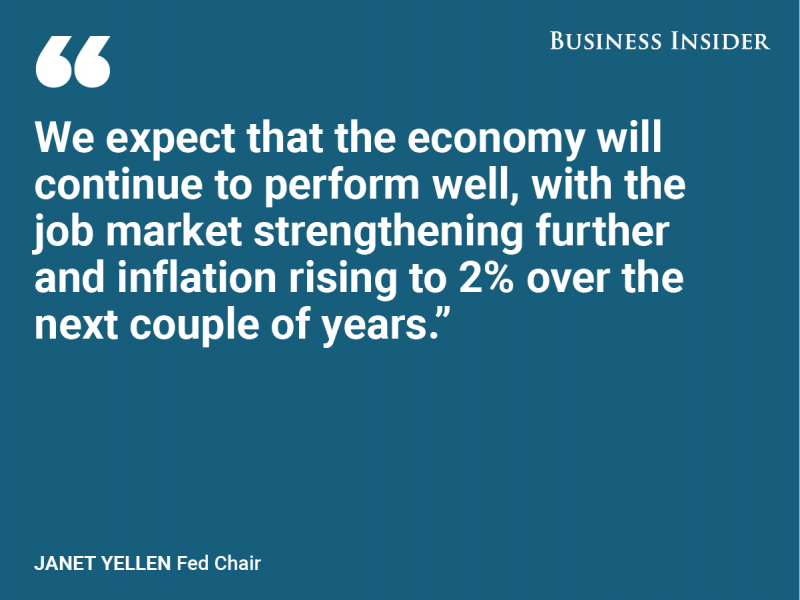The Federal Reserve on Wednesday decided to raise its benchmark interest rate, as expected, and upped its expectation for the number of rate hikes in 2017.
This move, which markets saw a 100% probability of, will increase the target of the federal funds rate – which banks use to lend to each other overnight – by 25 basis points, to a range of 0.50 to 0.75%.
This was the second rate hike in a decade. By continuing to lift rates from near zero, the Fed is slowly ending the era of unprecedented monetary policy support and giving the economy room to advance without it. A higher fed funds rate will lift rates on things like credit cards and mortgages, and test the extent to which consumer spending and business investment can propel the economy without Fed stimulus.
In its unanimous decision, the Federal Open Markets Committee noted improvement in the jobs market and the drop in the unemployment rate to a prerecession low. It noted the rise in inflation, partly due to more stable oil prices, and said expectations for higher prices had risen “considerably.”
2017 may be the year that fiscal policy starts to support the economy in a significant way as President-elect Donald Trump enters office. Trump has pledged to cut taxes for corporations and individuals and to invest about $550 billion in infrastructure. Wall Street already thinks these steps will spur economic growth and inflation while supporting company earnings; stocks surged to new highs after the election, while bonds sold off.

Trump's proposals are still uncertain, meaning the Fed is unlikely to capture the full extent of their effects in its outlook right now. The Fed's outlook for economic growth, inflation, and unemployment was little changed from its projections in September.
When the Fed in December 2015 moved for the first time since the financial crisis, it projected four rate hikes this year. However, it whiffed big on that estimate as the realities of market volatility, sluggish inflation, and underwhelming economic growth set in. To be fair, the Fed's projections were always conditional on incoming data.
The Fed expects to raise rates three times during the next three years.
Here's the full statement:
"Information received since the Federal Open Market Committee met in November indicates that the labor market has continued to strengthen and that economic activity has been expanding at a moderate pace since mid-year. Job gains have been solid in recent months and the unemployment rate has declined. Household spending has been rising moderately but business fixed investment has remained soft. Inflation has increased since earlier this year but is still below the Committee's 2 percent longer-run objective, partly reflecting earlier declines in energy prices and in prices of non-energy imports. Market-based measures of inflation compensation have moved up considerably but still are low; most survey-based measures of longer-term inflation expectations are little changed, on balance, in recent months.
Foto: sourceSamantha Lee/Business Insider"Consistent with its statutory mandate, the Committee seeks to foster maximum employment and price stability. The Committee expects that, with gradual adjustments in the stance of monetary policy, economic activity will expand at a moderate pace and labor market conditions will strengthen somewhat further. Inflation is expected to rise to 2 percent over the medium term as the transitory effects of past declines in energy and import prices dissipate and the labor market strengthens further. Near-term risks to the economic outlook appear roughly balanced. The Committee continues to closely monitor inflation indicators and global economic and financial developments.
"In view of realized and expected labor market conditions and inflation, the Committee decided to raise the target range for the federal funds rate to 1/2 to 3/4 percent. The stance of monetary policy remains accommodative, thereby supporting some further strengthening in labor market conditions and a return to 2 percent inflation.
"In determining the timing and size of future adjustments to the target range for the federal funds rate, the Committee will assess realized and expected economic conditions relative to its objectives of maximum employment and 2 percent inflation. This assessment will take into account a wide range of information, including measures of labor market conditions, indicators of inflation pressures and inflation expectations, and readings on financial and international developments. In light of the current shortfall of inflation from 2 percent, the Committee will carefully monitor actual and expected progress toward its inflation goal. The Committee expects that economic conditions will evolve in a manner that will warrant only gradual increases in the federal funds rate; the federal funds rate is likely to remain, for some time, below levels that are expected to prevail in the longer run. However, the actual path of the federal funds rate will depend on the economic outlook as informed by incoming data.
"The Committee is maintaining its existing policy of reinvesting principal payments from its holdings of agency debt and agency mortgage-backed securities in agency mortgage-backed securities and of rolling over maturing Treasury securities at auction, and it anticipates doing so until normalization of the level of the federal funds rate is well under way. This policy, by keeping the Committee's holdings of longer-term securities at sizable levels, should help maintain accommodative financial conditions.
"Voting for the FOMC monetary policy action were: Janet L. Yellen, Chair; William C. Dudley, Vice Chairman; Lael Brainard; James Bullard; Stanley Fischer; Esther L. George; Loretta J. Mester; Jerome H. Powell; Eric Rosengren; and Daniel K. Tarullo."


